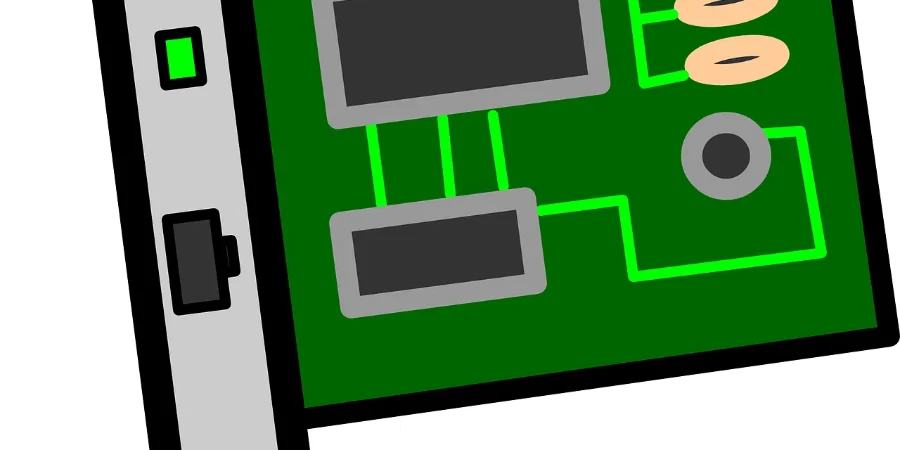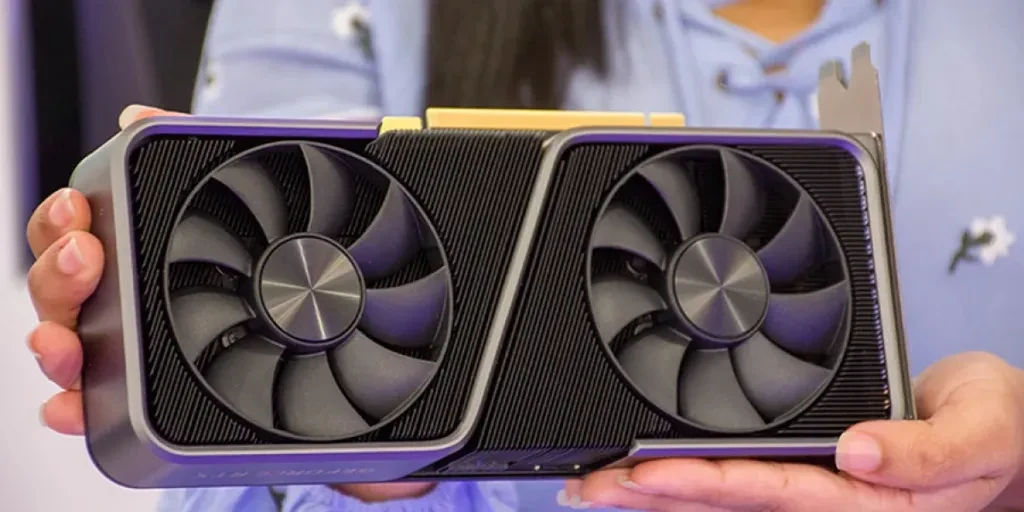Im Jahr 2025 ist es aufgrund der zunehmenden Anzahl vernetzter Geräte noch wichtiger geworden, die richtigen NIC-Karten auszuwählen, um eine nahtlose Konnektivität zu gewährleisten. Dieser Artikel bietet eine eingehende Analyse der neuesten Trends, Leistungskennzahlen und wichtigsten Überlegungen für professionelle Einkäufer und bietet wertvolle Hinweise für fundierte Kaufentscheidungen.
Inhaltsverzeichnis:
– Die Bedeutung von NIC-Karten für die Konnektivität verstehen
– Aktuelle Landschaft der NIC-Kartentechnologien
– Auswerten von Leistungsmetriken für NIC-Karten
– Überlegungen zu Kompatibilität und Integration
– Sicherheitsmerkmale von NIC-Karten
– Einpacken
Die Bedeutung von NIC-Karten für die Konnektivität verstehen
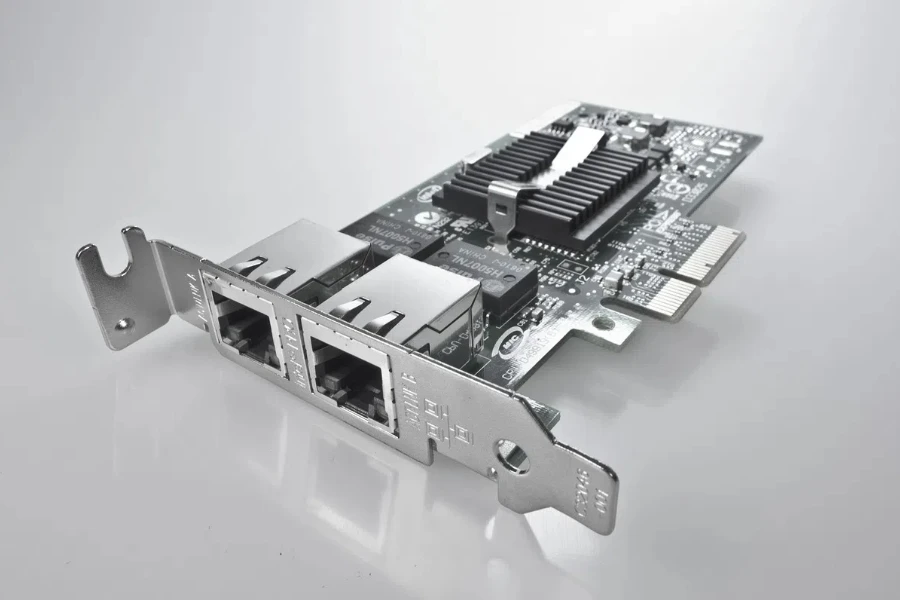
Marktnachfrage und Wachstumsprognosen
Der Markt für Netzwerkschnittstellenkarten (NIC) verzeichnet ein starkes Wachstum, das durch die steigende Nachfrage nach Hochgeschwindigkeitsinternet und die Verbreitung vernetzter Geräte angetrieben wird. Laut Research and Markets wird der globale NIC-Markt voraussichtlich im Jahr 3.09 2024 Milliarden USD erreichen, wobei eine durchschnittliche jährliche Wachstumsrate (CAGR) von 11.47 % erwartet wird und er bis 5.94 2030 Milliarden USD erreichen wird. Dieses Wachstum wird durch den Ausbau der Unternehmensvernetzung, Fortschritte in der Telekommunikationsinfrastruktur und die weit verbreitete Einführung der 5G-Technologie vorangetrieben.
Die Nachfrage nach NICs wird durch den Aufstieg von Edge Computing und dem Internet der Dinge (IoT) weiter gesteigert. Da die weltweite Anzahl der IoT-Verbindungen bis 23.3 voraussichtlich 2025 Milliarden erreichen wird, spielen NICs eine entscheidende Rolle bei der Verwaltung des Datenverkehrs und der Gewährleistung einer sicheren und effizienten Vernetzung. Die zunehmende Verbreitung von Smart Cities und industrieller Automatisierung trägt ebenfalls zum wachsenden Bedarf an robusten und zuverlässigen NIC-Lösungen bei, da diese Anwendungen eine nahtlose Integration verschiedener Konnektivitätsprotokolle und Unterstützung für Edge Computing erfordern.
Hauptakteure und Marktanteilsanalyse
Der NIC-Markt wird von mehreren wichtigen Akteuren dominiert, die bedeutende Marktanteile besitzen und durch kontinuierliche Innovationen ihren Wettbewerbsvorteil aufrechterhalten. Zu den wichtigsten Unternehmen in diesem Bereich zählen Intel Corporation, Qualcomm Incorporated und Huawei Technologies Co., Ltd. Intel Corporation ist beispielsweise ein führender Anbieter von Hochleistungs-NICs für Verbraucher- und Unternehmensanwendungen und nutzt dabei sein Fachwissen in der Halbleitertechnologie.
Qualcomm Incorporated ist ein weiterer bedeutender Akteur, der für seine Fortschritte bei drahtlosen Netzwerkkarten bekannt ist, insbesondere in den Segmenten 5G und Wi-Fi 6. Huawei Technologies Co., Ltd. hat ebenfalls beträchtliche Investitionen in die Netzwerkkartentechnologie getätigt und sich dabei auf kabelgebundene und drahtlose Lösungen konzentriert, um der wachsenden Nachfrage nach Hochgeschwindigkeitsverbindungen gerecht zu werden. Diese Unternehmen treiben zusammen mit anderen wie NETGEAR Inc. und Lenovo Group Limited weiterhin Innovationen auf dem Netzwerkkartenmarkt voran und sorgen für die Entwicklung hochmoderner Lösungen, um den sich entwickelnden Anforderungen von Verbrauchern und Unternehmen gerecht zu werden.
Aktuelle Landschaft der NIC-Kartentechnologien
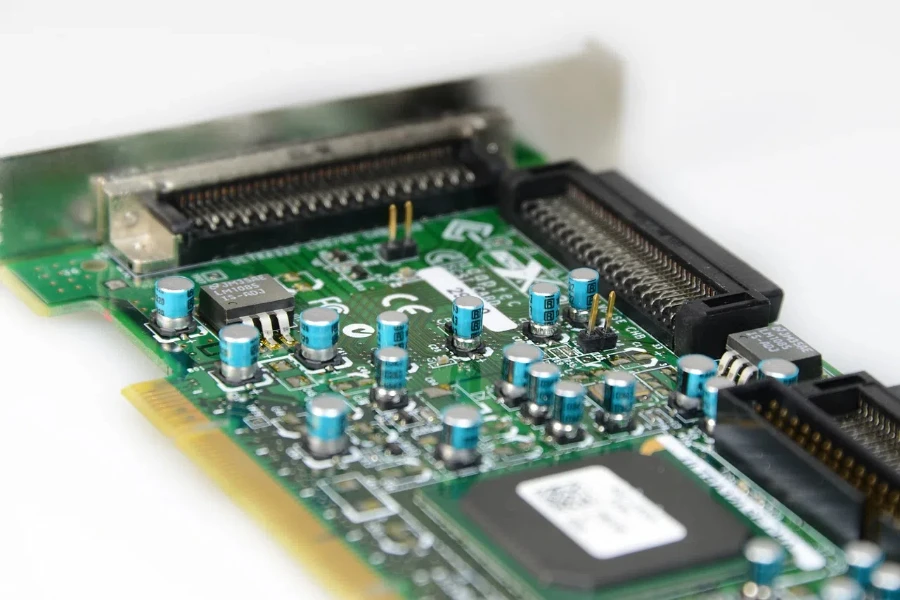
Kabelgebundene vs. kabellose Netzwerkkarten
Kabelgebundene Netzwerkkarten, die normalerweise Ethernet-Technologie verwenden, bleiben aufgrund ihrer Zuverlässigkeit und Hochgeschwindigkeitsfähigkeiten ein fester Bestandteil in Unternehmens- und Rechenzentrumsumgebungen. Ethernet-Netzwerkkarten unterstützen verschiedene Standards, darunter 1GbE, 10GbE und das neue 100GbE, und bieten skalierbare Lösungen für unterschiedliche Netzwerkanforderungen. Laut Research and Markets wird die Einführung schnellerer Ethernet-Standards voraussichtlich zunehmen, bedingt durch den steigenden Datenbedarf moderner Anwendungen und die Expansion von Rechenzentren.
Drahtlose Netzwerkkarten hingegen bieten den Vorteil der Mobilität und einfachen Installation, was sie ideal für Unterhaltungselektronik und IoT-Geräte macht. Die Verbreitung von Wi-Fi 6 und den kommenden Wi-Fi 7-Standards wird die Leistung drahtloser Netzwerkkarten verbessern und höhere Geschwindigkeiten, geringere Latenz und verbesserte Kapazität bieten. Die Integration der 5G-Technologie in drahtlose Netzwerkkarten erweitert ihr Potenzial noch weiter und ermöglicht Hochgeschwindigkeitsverbindungen in Bereichen, in denen eine kabelgebundene Infrastruktur nicht möglich ist.
Ethernet-Standards und ihre Auswirkungen
Ethernet-Standards haben sich erheblich weiterentwickelt, wobei jede neue Iteration höhere Geschwindigkeiten und verbesserte Leistung bietet. Der Übergang von 1GbE zu 10GbE war ein wichtiger Meilenstein, der eine Verzehnfachung der Datenübertragungsraten ermöglichte und anspruchsvollere Anwendungen unterstützte. Die Einführung der Standards 25GbE und 40GbE hat die Netzwerkleistung weiter verbessert, insbesondere in Rechenzentrumsumgebungen, in denen eine hohe Bandbreite entscheidend ist.
Zu den neuesten Fortschritten in der Ethernet-Technologie gehört die Entwicklung der Standards 100GbE und 400GbE, die in den kommenden Jahren voraussichtlich an Bedeutung gewinnen werden. Diese Hochgeschwindigkeitsstandards sind für die Unterstützung des wachsenden Datenverkehrs durch Cloud Computing, Big Data Analytics und IoT-Anwendungen unverzichtbar. Laut Research and Markets wird die Einführung dieser fortschrittlichen Ethernet-Standards voraussichtlich zu einem erheblichen Wachstum des NIC-Marktes führen, da Unternehmen ihre Netzwerkinfrastruktur aufrüsten möchten, um den steigenden Leistungsanforderungen gerecht zu werden.
Neue Trends in der NIC-Kartenentwicklung
Mehrere neue Trends prägen die Zukunft der NIC-Kartenentwicklung, darunter die Integration von künstlicher Intelligenz (KI) und maschinellem Lernen (ML). Diese Technologien ermöglichen es NICs, die Netzwerkleistung zu optimieren, die Sicherheit zu verbessern und eine vorausschauende Wartung zu ermöglichen. KI-gestützte NICs können Netzwerkparameter dynamisch anpassen, um eine optimale Leistung sicherzustellen, während ML-Algorithmen potenzielle Sicherheitsbedrohungen in Echtzeit erkennen und eindämmen können.
Ein weiterer bemerkenswerter Trend ist die Einführung von Technologien für softwaredefinierte Netzwerke (SDN) und Netzwerkfunktionsvirtualisierung (NFV). Diese Ansätze entkoppeln Netzwerkfunktionen von der Hardware und ermöglichen so eine flexiblere und skalierbarere Netzwerkverwaltung. NICs, die SDN und NFV unterstützen, können einfach per Software neu konfiguriert und aktualisiert werden, wodurch der Bedarf an Hardware-Upgrades reduziert und ein effizienterer Netzwerkbetrieb ermöglicht wird. Die Konvergenz von 5G und Edge Computing treibt auch Innovationen in der NIC-Entwicklung voran, da diese Technologien leistungsstarke Konnektivitätslösungen mit geringer Latenz erfordern, um die Echtzeit-Datenverarbeitung und -analyse am Netzwerkrand zu unterstützen.
Auswerten von Leistungsmetriken für NIC-Karten
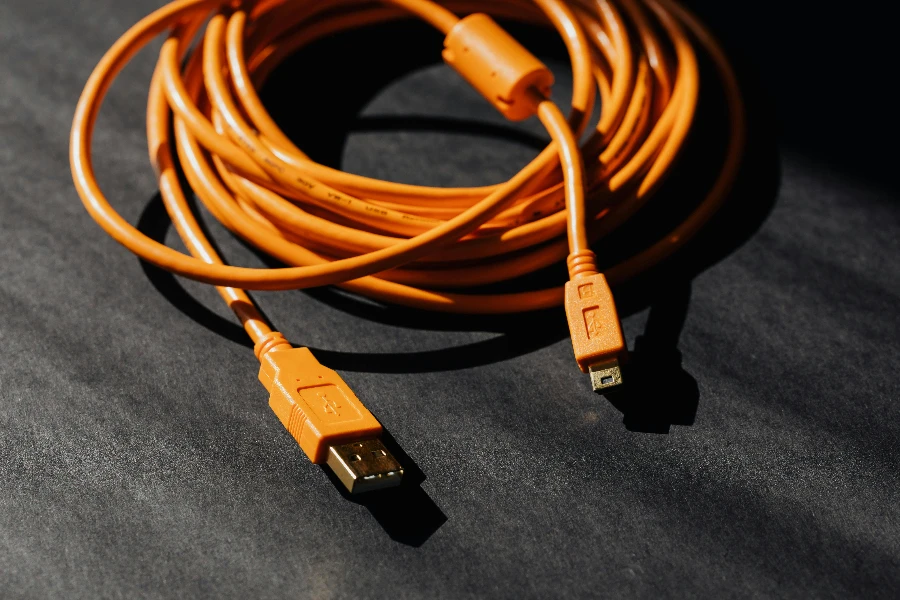
Datenübertragungsraten
Die Datenübertragungsrate ist ein entscheidender Leistungsparameter für Netzwerkschnittstellenkarten (NICs). Moderne NICs, insbesondere solche für Hochleistungsrechnerumgebungen, unterstützen Datenübertragungsraten von bis zu 100 Gbit/s. Dies wird durch fortschrittliche Technologien wie PCIe 4.0 und 5.0 erreicht, die die erforderliche Bandbreite für solche Hochgeschwindigkeitsdatenübertragungen bereitstellen.
Beispielsweise unterstützt die Intel Ethernet Network Adapter E810-Serie Datenübertragungsraten von 100 Gbit/s und eignet sich daher für Rechenzentren und Unternehmensnetzwerke. Diese NICs nutzen fortschrittliche Offloading-Techniken, um große Datenmengen effizient zu verarbeiten. Darüber hinaus verbessert die Verwendung von RDMA (Remote Direct Memory Access) die Datenübertragungsgeschwindigkeit weiter, indem es den direkten Speicherzugriff von einem Computer auf einen anderen ermöglicht, ohne die CPU einzubeziehen.
Latenz und Durchsatz
Latenz und Durchsatz sind wichtige Kennzahlen zur Bewertung der NIC-Leistung. Eine geringe Latenz ist entscheidend für Anwendungen, die eine Echtzeit-Datenverarbeitung erfordern, wie etwa Finanzhandelssysteme und Online-Spiele. Ein hoher Durchsatz stellt sicher, dass große Datenmengen schnell und effizient übertragen werden können.
NICs wie die Mellanox ConnectX-6 Dx bieten eine ultraniedrige Latenz von weniger als 1 Mikrosekunde und sind daher ideal für latenzempfindliche Anwendungen. Diese NICs unterstützen außerdem einen hohen Durchsatz mit Kapazitäten von bis zu 200 Gbit/s und sorgen so dafür, dass datenintensive Anwendungen reibungslos ausgeführt werden können. Die Kombination aus niedriger Latenz und hohem Durchsatz wird durch erweiterte Funktionen wie adaptives Routing und Überlastungskontrollmechanismen erreicht.
Stromverbrauchseffizienz
Die Energieeffizienz des Stromverbrauchs wird bei der Entwicklung und Auswahl von Netzwerkkarten immer wichtiger, insbesondere in Rechenzentren, wo die Energiekosten erheblich sein können. Effiziente Netzwerkkarten tragen zur Reduzierung des Gesamtstromverbrauchs bei, was zu niedrigeren Betriebskosten und einem geringeren CO2-Fußabdruck beiträgt.
Die NICs der Broadcom NetXtreme E-Serie sind auf Energieeffizienz ausgelegt und bieten Funktionen wie Energy Efficient Ethernet (EEE) und dynamisches Energiemanagement. Diese NICs können den Stromverbrauch in Zeiten geringer Netzwerkaktivität um bis zu 50 % senken. Darüber hinaus trägt der Einsatz fortschrittlicher Siliziumtechnologien und optimierter Firmware dazu bei, die Energieeffizienz weiter zu verbessern, ohne die Leistung zu beeinträchtigen.
Überlegungen zu Kompatibilität und Integration

Hardware- und Softwarekompatibilität
Bei der Integration von NICs in bestehende Systeme ist die Gewährleistung der Hardware- und Softwarekompatibilität von entscheidender Bedeutung. NICs müssen mit dem Motherboard, dem Betriebssystem und der Netzwerkinfrastruktur des Hostsystems kompatibel sein, um ordnungsgemäß zu funktionieren.
Beispielsweise ist die Intel X550-T2-Netzwerkkarte mit einer Vielzahl von Betriebssystemen kompatibel, darunter Windows, Linux und VMware ESXi. Sie unterstützt auch verschiedene Netzwerkprotokolle und -standards wie IEEE 802.3 und 802.1Q und gewährleistet so eine nahtlose Integration in unterschiedliche Netzwerkumgebungen. Darüber hinaus werden die Treiber und die Firmware der Netzwerkkarte regelmäßig aktualisiert, um die Kompatibilität mit den neuesten Software- und Hardware-Fortschritten aufrechtzuerhalten.
Anforderungen an die Netzwerkinfrastruktur
Um die richtige Netzwerkkarte auszuwählen, müssen Sie die Anforderungen an die Netzwerkinfrastruktur kennen. Um eine optimale Leistung zu gewährleisten, müssen Faktoren wie Netzwerktopologie, Verkabelung und Switch-Kompatibilität berücksichtigt werden.
Beispielsweise ist der Cisco UCS VIC 1455 für den Einsatz in Cisco UCS-Umgebungen konzipiert und bietet eine nahtlose Integration mit dem Unified Computing System von Cisco. Diese Netzwerkkarte unterstützt sowohl 10-Gbit/s- als auch 25-Gbit/s-Ethernet und ist daher für verschiedene Netzwerkkonfigurationen geeignet. Sie verfügt außerdem über erweiterte Funktionen wie die Unterstützung virtueller Netzwerkschnittstellenkarten (vNIC) und hardwarebasierte Dienstgüte (QoS) zur Optimierung der Netzwerkleistung.
Machen Sie Ihre Konnektivitätslösungen zukunftssicher
Um Ihre Konnektivitätslösungen zukunftssicher zu machen, müssen Sie Netzwerkkarten auswählen, die sich an sich entwickelnde Netzwerkanforderungen und -technologien anpassen können. Dadurch wird sichergestellt, dass die Investition in die Netzwerkinfrastruktur im Laufe der Zeit relevant und effektiv bleibt.
Die NICs der Marvell FastLinQ 41000-Serie sind zukunftssicher konzipiert und unterstützen sowohl aktuelle als auch neue Netzwerkstandards. Diese NICs bieten Funktionen wie SR-IOV (Single Root I/O Virtualization) und NVMe over Fabrics, sodass sie zukünftige Arbeitslasten und Technologien bewältigen können. Darüber hinaus ermöglicht ihr modulares Design einfache Upgrades und Skalierbarkeit und gewährleistet so eine langfristige Rentabilität.
Sicherheitsmerkmale von NIC-Karten

Verschlüsselungsstandards
Verschlüsselungsstandards sind ein wichtiges Sicherheitsmerkmal für Netzwerkkarten. Sie stellen sicher, dass über das Netzwerk übertragene Daten vor unbefugtem Zugriff geschützt sind. Moderne Netzwerkkarten unterstützen verschiedene Verschlüsselungsprotokolle, um die Datenintegrität und -vertraulichkeit zu gewährleisten.
Der HPE Ethernet 10 Gb 2-Port 562FLR-SFP+ Adapter unterstützt IPsec- und MACsec-Verschlüsselung und bietet so robuste Sicherheit für übertragene Daten. Diese Verschlüsselungsstandards schützen vor Man-in-the-Middle-Angriffen und stellen sicher, dass vertrauliche Informationen geschützt bleiben. Darüber hinaus reduziert die hardwarebasierte Verschlüsselungsauslagerung der Netzwerkkarte die Verarbeitungslast der Host-CPU und verbessert so die Gesamtsystemleistung.
Zugriffskontrollmechanismen
Zugriffskontrollmechanismen sind unerlässlich, um unbefugten Zugriff auf Netzwerkressourcen zu verhindern. Netzwerkkarten mit erweiterten Zugriffskontrollfunktionen können dazu beitragen, Netzwerksicherheitsrichtlinien durchzusetzen und vor potenziellen Bedrohungen zu schützen.
Die NICs der Broadcom NetXtreme-E-Serie umfassen Funktionen wie Secure Boot und Trusted Platform Module (TPM)-Unterstützung, wodurch sichergestellt wird, dass nur autorisierte Firmware und Software auf dem Gerät ausgeführt werden kann. Diese NICs unterstützen auch Netzwerkzugriffskontrollprotokolle wie 802.1X und ermöglichen so eine sichere Authentifizierung und Autorisierung von Geräten, die eine Verbindung zum Netzwerk herstellen. Diese Mechanismen tragen dazu bei, eine sichere Netzwerkumgebung aufrechtzuerhalten und unbefugten Zugriff zu verhindern.
Firmware- und Software-Updates
Regelmäßige Firmware- und Software-Updates sind für die Aufrechterhaltung der Sicherheit und Leistung von Netzwerkkarten von entscheidender Bedeutung. Updates enthalten häufig Sicherheitspatches, Fehlerbehebungen und Leistungsverbesserungen und stellen sicher, dass die Netzwerkkarte sicher und effizient bleibt.
Die Mellanox ConnectX-5-NICs bieten einen robusten Update-Mechanismus, mit dem Administratoren Firmware- und Software-Updates problemlos durchführen können. Diese Updates können über zentralisierte Verwaltungstools verwaltet werden, sodass sichergestellt ist, dass alle NICs im Netzwerk auf dem neuesten Stand sind. Darüber hinaus unterstützen die NICs Secure Boot und signierte Firmware, wodurch die Durchführung nicht autorisierter oder böswilliger Updates verhindert wird.
Fazit
Bei der Auswahl von Netzwerkkarten für Ihre Netzwerkinfrastruktur ist die Bewertung von Leistungsmetriken, Kompatibilität und Sicherheitsfunktionen von entscheidender Bedeutung. Indem Sie Faktoren wie Datenübertragungsraten, Latenz, Energieeffizienz und Sicherheitsstandards berücksichtigen, können Sie sicherstellen, dass Ihr Netzwerk robust, effizient und sicher bleibt.
